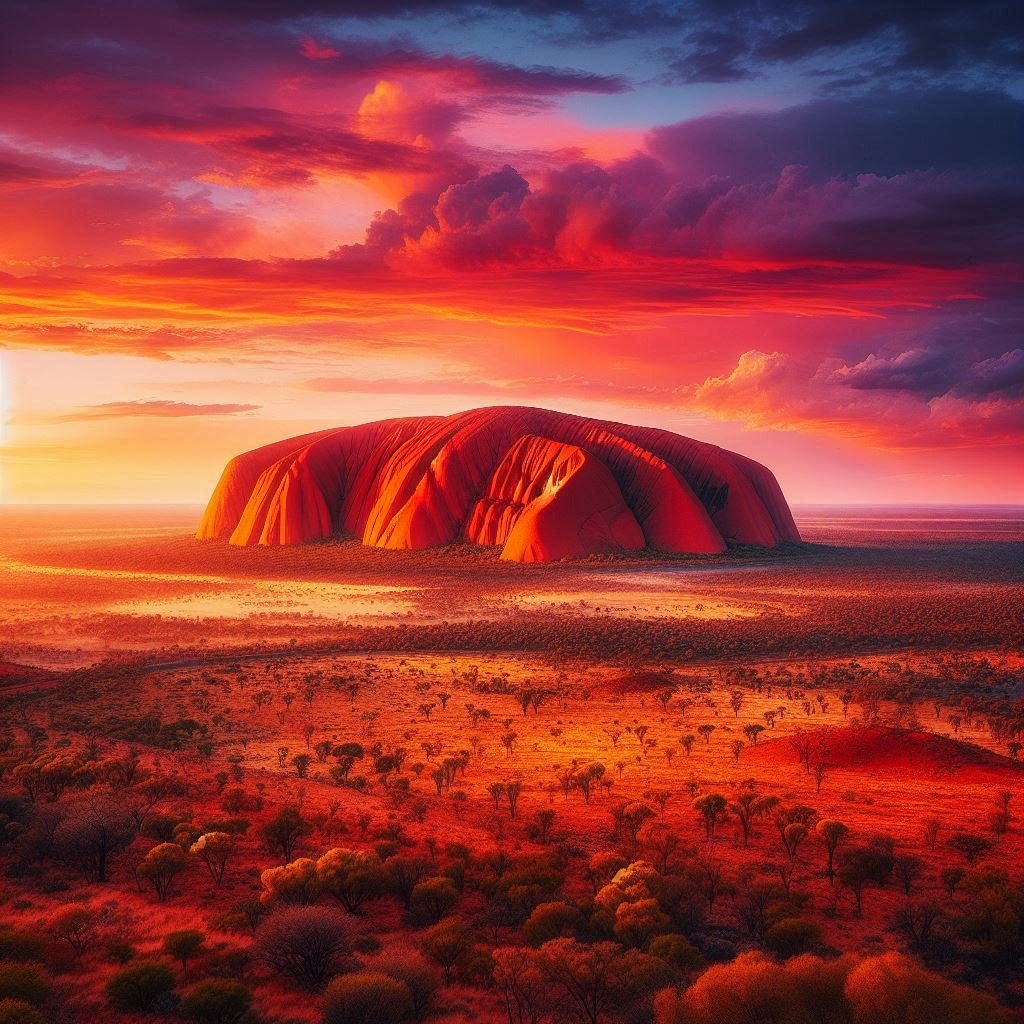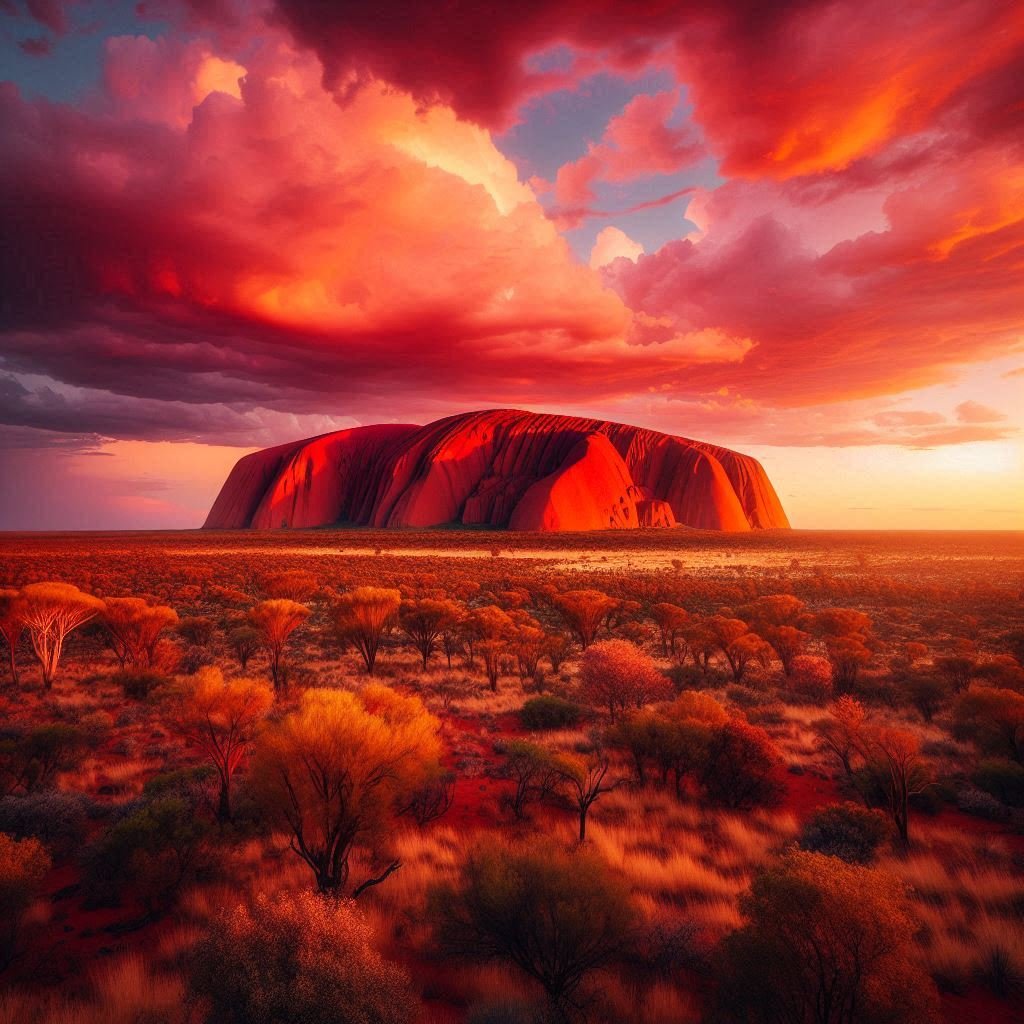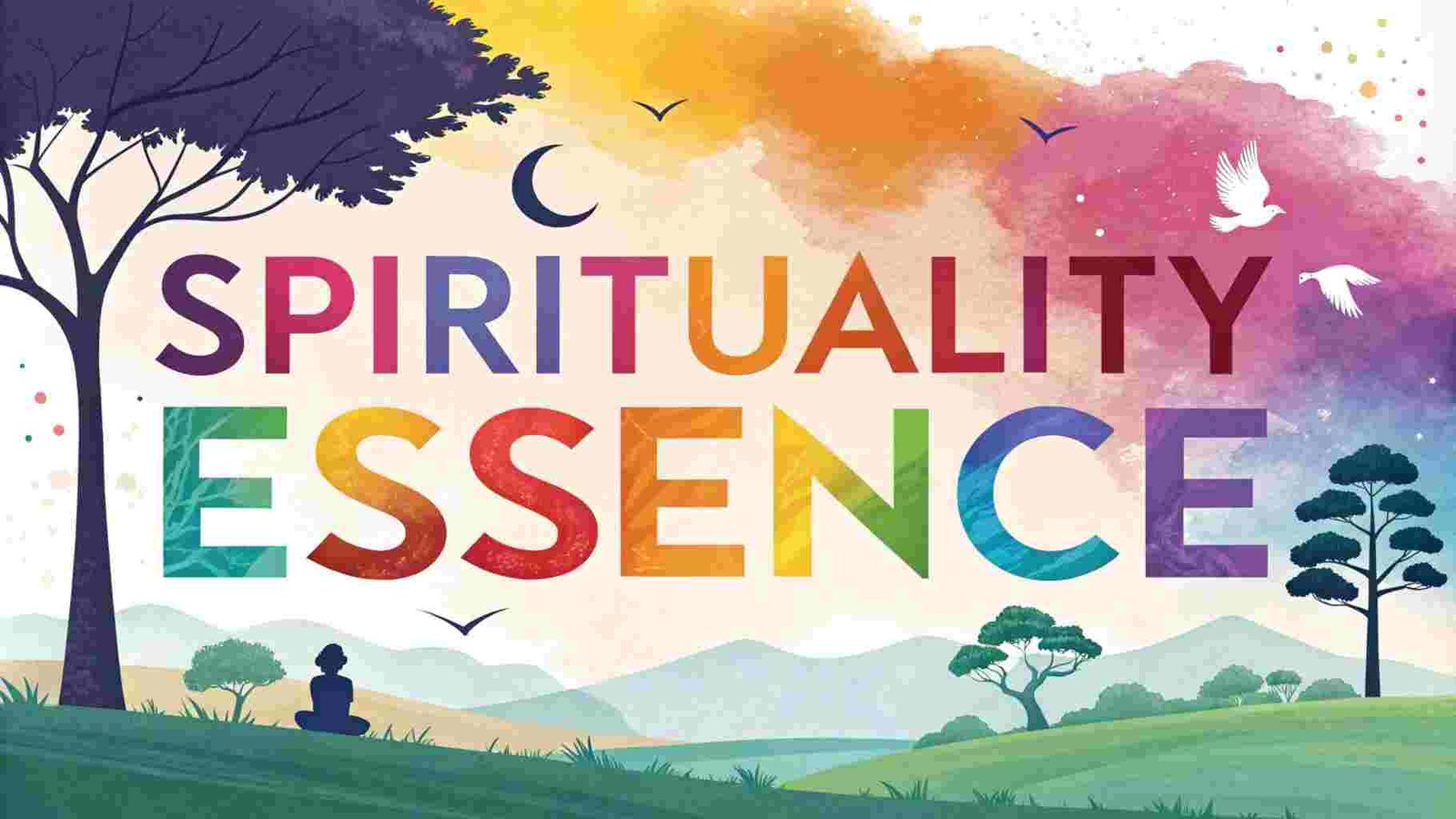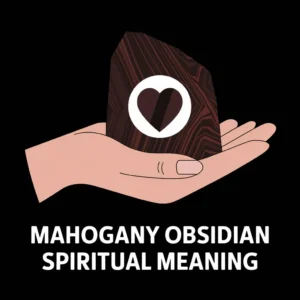In the heart of Australia’s Red Centre, a majestic monolith rises from the desert floor, its rust-red hues glowing with an otherworldly intensity. Uluru, also known as Ayers Rock, is more than just a natural wonder – it’s a sacred landscape imbued with the spiritual essence of the Anangu people, the traditional owners of this land.
For thousands of years, Uluru has been a site of deep spiritual significance, its ancient stories, songs, and dances woven into the fabric of Indigenous Australian culture.
As we delve into the mysteries of this sacred site, we’ll uncover the profound meaning and significance that Uluru holds, not just for the Anangu people, but for all those who seek to connect with the land, the ancestors, and the very heart of Australia itself.
Uluru’s Deep Spiritual Significance and Meaning – Quick Overview

- Sacred Site: Uluru is a sacred site for the Anangu people, the traditional owners of the land, who believe that the rock holds the stories, songs, and dances of their ancestors.
- Dreamtime: Uluru is said to have been created during the Dreamtime, a period when ancestral beings roamed the earth, creating the land, animals, and people.
- Spiritual Energy: The Anangu people believe that Uluru holds powerful spiritual energy, which is connected to the land, the ancestors, and the Dreamtime.
- Songlines: Uluru is part of a network of songlines, which are ancient tracks that crisscross the Australian landscape, holding the stories and songs of the ancestors.
- Ceremonial Significance: Uluru is a site of great ceremonial significance, with many important rituals and ceremonies taking place around the rock.
- Connection to the Land: Uluru represents a deep connection to the land, the ancestors, and the natural world, and is a symbol of the Anangu people’s rich cultural heritage.

The Dreamtime: Uluru’s Creation Story
In the heart of Australia’s Red Centre, Uluru (also known as Ayers Rock) stands tall, its rust-red hues glowing with an otherworldly intensity. But Uluru is more than just a natural wonder – it’s a sacred site imbued with the spiritual essence of the Anangu people, the traditional owners of this land. According to Anangu mythology, Uluru was created during the Dreamtime, a period when ancestral beings roamed the earth, creating the land, animals, and people.
The Dreamtime is a complex and multifaceted concept that underpins Anangu spirituality. It’s a time when the laws of physics were different, and the ancestors had the power to shape the land and create life. The Dreamtime is not just a creation story, but a living, breathing reality that continues to shape the Anangu people’s understanding of the world.
Songlines and Ceremonial Paths: Uncovering Uluru’s Ancient History
Uluru is part of a network of songlines, which are ancient tracks that crisscross the Australian landscape, holding the stories and songs of the ancestors. These songlines are like a spiritual internet, connecting Uluru to other sacred sites across the country. The Anangu people believe that the songlines hold the secrets of the Dreamtime, and that they are a key to understanding the spiritual significance of Uluru.
The songlines are not just abstract concepts – they are physical paths that the Anangu people have walked for thousands of years, performing rituals and ceremonies to keep the stories and songs alive. These ceremonial paths are like a spiritual highway, connecting Uluru to the surrounding landscape and the people who call it home.
The Heart of the Anangu People: Uluru’s Spiritual Significance
Uluru is more than just a rock – it’s the heart of the Anangu people. It’s a symbol of their connection to the land, their ancestors, and their culture. The Anangu people believe that Uluru holds the stories, songs, and dances of their ancestors, and that it’s a site of great spiritual power.
Uluru is not just a sacred site – it’s a living, breathing entity that pulsates with spiritual energy. The Anangu people believe that Uluru has the power to heal, to protect, and to connect people to the land and the ancestors. It’s a site of great ceremonial significance, with many important rituals and ceremonies taking place around the rock.
The Rock of Ages: Uluru’s Geological and Spiritual Formation
Uluru is a geological wonder, formed over 500 million years ago from sand and pebbles that were compressed and cemented together. But Uluru’s spiritual significance goes far beyond its geological formation. The Anangu people believe that Uluru was created during the Dreamtime, when the ancestral beings shaped the land and created the rock.
Uluru’s unique geological formation is mirrored in its spiritual significance. The rock’s rust-red color is said to represent the blood of the ancestors, while its towering height represents the connection to the Dreamtime. Uluru’s geological formation is a testament to the power of the ancestors, who shaped the land and created the rock.
The Ancestors’ Footprints: Uluru’s Connection to the Land and the Dreamtime
Uluru is not just a rock – it’s a site of great spiritual power, where the Anangu people can connect to the land, the ancestors, and the Dreamtime. The rock is covered in ancient rock art, which tells the stories of the ancestors and their connection to the land.
The Anangu people believe that Uluru holds the footprints of the ancestors, who walked the land during the Dreamtime. These footprints are not just physical marks – they’re spiritual pathways that connect the Anangu people to the land and the ancestors. Uluru is a site of great spiritual significance, where the Anangu people can connect to their heritage and their culture.

The Sacred Landscape of Uluru: A Site of Rituals and Ceremonies
Uluru is not just a rock – it’s a sacred landscape, where the Anangu people have performed rituals and ceremonies for thousands of years. The rock is surrounded by a network of sacred sites, including waterholes, caves, and rock art.
The Anangu people believe that Uluru is a site of great spiritual power, where they can connect to the ancestors and the Dreamtime. The rock is a focal point for many important rituals and ceremonies, including initiation ceremonies, healing ceremonies, and ceremonies to mark important life events.
The Power of Uluru: A Symbol of Spiritual Energy and Connection
Uluru is more than just a rock – it’s a symbol of spiritual energy and connection. The Anangu people believe that Uluru holds the power to heal, to protect, and to connect people to the land and the ancestors.
Uluru’s spiritual power is not just a myth – it’s a reality that has been experienced by many people who have visited the rock. Visitors have reported feeling a sense of spiritual energy and connection when they visit Uluru, which is said to be palpable and intense.
The Cultural Heritage of Uluru: Preserving the Anangu People’s Traditions
Uluru is not just a sacred site – it’s a cultural heritage site, where the Anangu people’s traditions and customs are preserved. The Anangu people have lived in harmony with the land for thousands of years, and Uluru is a testament to their rich cultural heritage.
The Anangu people are working hard to preserve their cultural heritage, including their language, customs, and traditions. They are sharing their stories and songs with the world, and working to protect Uluru and the surrounding landscape from damage and destruction.
Respecting the Sacred: The Importance of Indigenous Cultural Protocols
Uluru is a sacred site, and it’s essential to respect the Anangu people’s cultural protocols when visiting the rock. This includes not climbing the rock, not taking photos in certain areas, and not removing rocks or soil from the site.
Respecting the sacred is not just about following rules – it’s about showing respect for the Anangu people’s culture and traditions. By respecting the sacred, we can help to preserve Uluru’s spiritual significance and cultural heritage for future generations.
Beyond the Rock: Uluru’s Spiritual Significance in Modern Times
Uluru’s spiritual significance is not just limited to the Anangu people – it’s a symbol of spiritual connection and energy that resonates with people from all over the world. In modern times, Uluru has become a symbol of Indigenous Australian culture, and a testament to the rich cultural heritage of the Anangu people.
Uluru’s spiritual significance is not just about the past – it’s about the present and the future. It’s a reminder of the importance of respecting Indigenous cultures and traditions, and of preserving our cultural heritage for future generations.
FAQs
Q: What is the spiritual significance of Uluru to the Anangu people?
A: Uluru is a sacred site to the Anangu people, who believe that the rock holds the stories, songs, and dances of their ancestors. It’s a site of great spiritual power, where the Anangu people can connect to the land, the ancestors, and the Dreamtime.
Q: What is the Dreamtime?
A: The Dreamtime is a complex and multifaceted concept that underpins Anangu spirituality. It’s a time when the laws of physics were different, and the ancestors had the power to shape the land and create life. The Dreamtime is not just a creation story, but a living, breathing reality that continues to shape the Anangu people’s understanding of the world.
Q: Why is Uluru important to Indigenous Australian culture?
A: Uluru is a symbol of Indigenous Australian culture, and a testament to the rich cultural heritage of the Anangu people. It’s a site of great spiritual significance, where the Anangu people can connect to their heritage and their culture.
Q: Can I climb Uluru?
A: No, it’s not recommended to climb Uluru. The Anangu people consider the rock to be sacred, and climbing it is considered disrespectful to their culture and traditions. Instead, visitors can walk around the base of the rock and take in its spiritual energy.
Q: How can I respect the sacred site of Uluru?
A: To respect the sacred site of Uluru, visitors should not climb the rock, not take photos in certain areas, and not remove rocks or soil from the site. Visitors should also follow the cultural protocols and guidelines set by the Anangu people, and be mindful of their own behavior and impact on the site.
Q: What is the best way to experience Uluru’s spiritual significance?
A: The best way to experience Uluru’s spiritual significance is to take a guided tour with an Anangu guide, who can share their knowledge and stories about the rock and its significance. Visitors can also take a moment to sit in silence, reflect on the rock’s spiritual energy, and connect to the land and the ancestors.
Q: Can I take photos of Uluru?
A: Yes, but be respectful of the Anangu people’s cultural protocols. Avoid taking photos in certain areas, such as near sacred waterholes or rock art sites. Also, be mindful of the time of day and the lighting, as the rock can be particularly sensitive to flash photography.
Q: How can I learn more about Uluru’s spiritual significance?
A: There are many ways to learn more about Uluru’s spiritual significance, including taking a guided tour, reading books and articles, and watching documentaries. Visitors can also attend cultural events and festivals, and engage with the Anangu people and their culture.

Hello, I’m Zephyra, your guide at SpiritualityEssence.com. I’m passionate about uncovering life’s mysteries and sharing transformative insights. Let’s explore mindfulness, ancient rituals, and the path to a more awakened life together. Join me on this spiritual journey!











